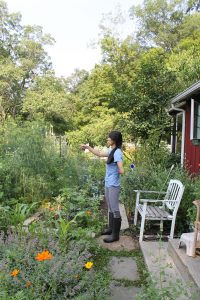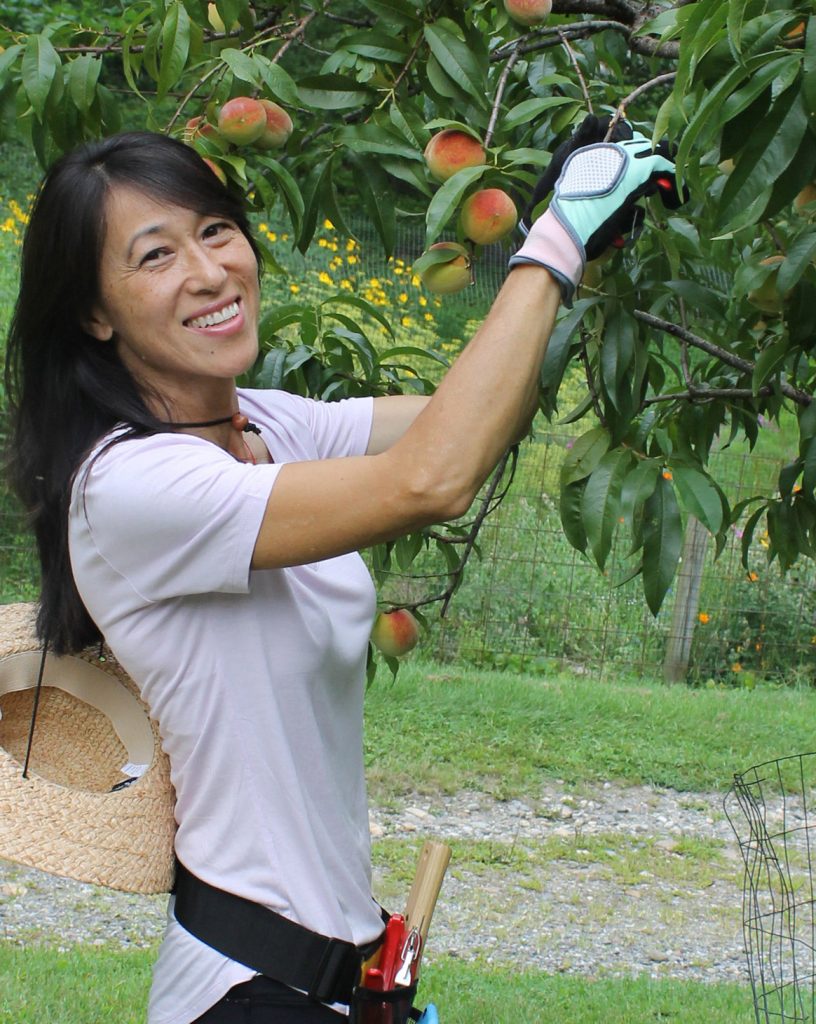designed for the way women work.
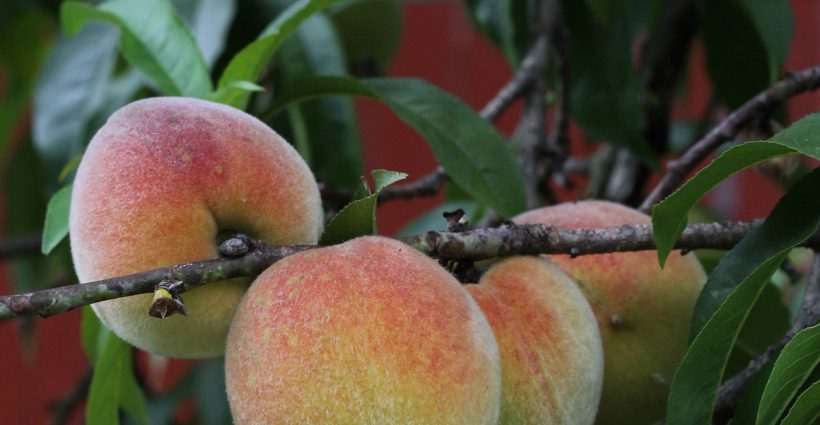
Planting A Special Kind of Orchard
Category: How-To Projects, Plant Ideas & Info, Presenting "The Curious Gardener"
Michelle Lam’s happiest childhood memories are of sitting in fruit trees eating fruit on her parents’ farm in Hong Kong.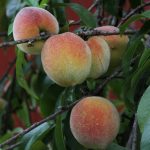
Those memories bubbled to the surface when she and her husband and daughter Lily moved to Dutchess County, NY, to ‘put down roots,’ says Michelle. The previous owners of the 7 1/2-acre property they fell in love with had “lots of animals and the soil was great,” says Michelle. Also, the house sits on a hill facing south, so the sun traverses the front of the property all day long. There were a few fruit trees already, which provided a living laboratory for her future orchard.
As Michelle began to experiment with growing fruit trees she discovered that she loved the process of learning. She did most of her research on site and online, and took classes to become a Master Gardener as well. “I learned not to expect perfection, but to keep trying. With fruit trees especially, there are always new challenges—new bugs, new diseases,” she says.
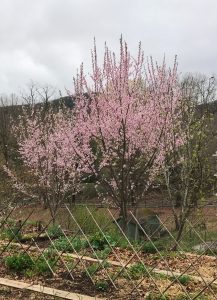
Michelle’s Zone 6 orchard and garden now has peach, almond, apple, cherry, European and Asian pear, plum and paw paw trees. She has a crabapple tree to help with apple pollination, and a bee hive. She has avocado and fig trees that she brings indoors during the winter. She grows a wide variety of berry plants too, including strawberry, blueberries, blackberry, raspberry, elderberry and others.
There’s another kind of challenge Michelle wanted to embrace for personal reasons. Before she moved to Dutchess County she and her husband lived in a subdivision in Pennsylvania. As a first time home owner she wanted to learn ways to attract birds to her yard. In the process she found that the ecosystem where she lived was unhealthy for wildlife. The topsoil had been scraped off when the development was built, and there were no birds.
Years later, after having her daughter and being diagnosed with cancer, Michelle decided that she would grow a chemical-free garden and orchard. When everyone around her was saying that it wasn’t possible for fruit trees to thrive without pesticides, she realized she needed to look beyond traditional gardening methods to fulfill her dream. She became a self taught permaculturist, and through determination and hard work has proved that a chemical free approach to growing fruit trees is possible.
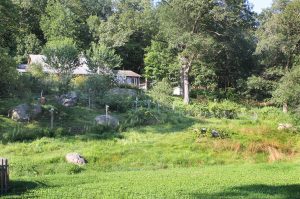
Guided by A Chinese Proverb
Her goal is to ‘mimic’ nature in her garden. It’s a simple-sounding concept that requires a studious approach—and a lot of trial and error. Once established, the garden that replicates nature requires less intervention to maintain. It is its own ecosystem, balancing water, sun and other cultural needs with only the mindful guidance of the gardener. Michelle quotes a Chinese proverb “The best fertilizer is the gardener’s shadow.”
In her permaculture food forest, as she calls it, Michelle’s house is at the center, providing shade where needed. In turn, her property is ringed by large trees that provide shade to the house. The 2nd story of her garden is the ring of fruit trees on the edge of her forest, which mimics the way it occurs in nature. Under the fruit trees her understory is made up of native perennials and herbs. The herbs attract beneficial insects which help the fruit trees.
Michelle is a humble gardener. It is difficult to get her to acknowledge her achievements in the garden. She considers it a project that challenges her everyday with new obstacles and rewards. She says “I feel like there’s still so much to learn.”
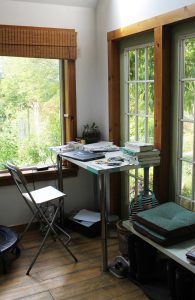
Sharing What She’s Learned
I asked Michelle to share some of what she’s learned in creating her orchard. Here are some of her thoughts:
- Seek out the most disease resistant varieties you can find. Michelle has had good luck with Stark Brothers Nurseries because they offer many different kinds of young bare root disease resistant fruit trees and berry bushes. She finds that peaches are the least prone to disease (though the downside is they only live 7 or 8 years) and apples are the most disease prone.
- Michelle likes to plant trees in the late fall because she finds there is less maintenance.
- Before she plants a tree she composts in place to amend the soil where the future tree will grow. If she’s planting in late fall she uses shredded leaves, chicken bedding, grass clippings and other garden debris that’s not diseased. She keeps the trees mulched with the same combination of ingredients after they are planted.
- When disease and pests present themselves, she cuts off the infected branches and fruits as soon as possible. She hand picks the pests off the tree if she sees them. But she waits a bit to see if nature can take care of it before it becomes an infestation. With an infestation she will try traps. If the system is balanced and the trees are healthy, they can handle some diseases and pest pressure, but the fruits might not look perfect.
- Fruit trees need a full 8 hours of sun a day to produce the sweet fruit you want. They will survive on less, and might grow fruit with less, but they won’t be as happy or healthy.
- Enjoy the results! When the fruit is ready for picking Michelle calls friends to help with the harvest and share in the bounty. She makes pies, cobblers, juices, smoothies, shakes and then freezes all the extras.
- Don’t expect perfect fruit or you will be disappointed. Enjoy the journey and keep trying!
Michelle is available for consultations. Please contact her at mc_lam@hotmail.com. We will be announcing a Springtime tour of Michelle’s garden in “The Curious Gardener” newsletter, so stay tuned.
Writer’s Note: I met Michelle a few years ago when she was just starting to plant her orchard. She and her daughter Lily stop by the Womanswork office from time to time to say hello and stock up on gloves and supplies. Last summer when I asked if she would like to be featured in the Womanswork catalog, she invited me to visit her home and garden. As I drove towards her house I wondered if it could be the house where our sweet late dog Haley was born, 20 years ago now. For years I had driven by that house thinking of Haley. When I read the number on her mailbox I found that indeed it was the very house where Haley was born! What a happy coincidence! –Dorian Winslow
Below: Michelle picking peaches wearing Womanswork High Performance gloves and Hip Holster
